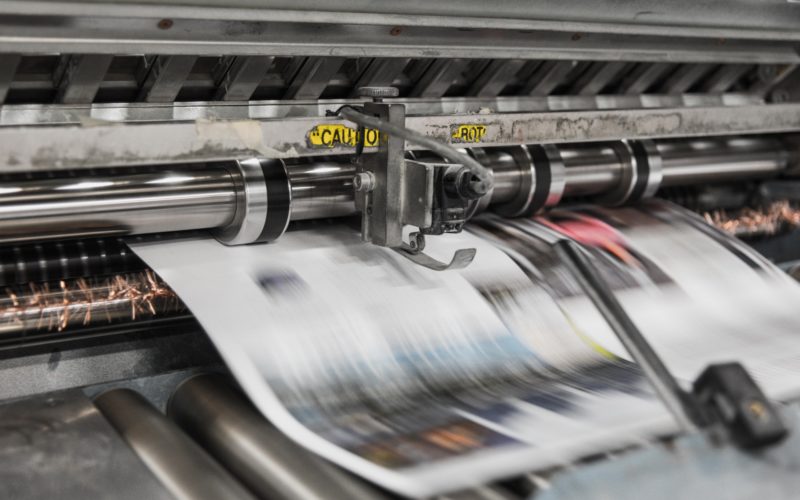For many businesses, server-based printing has been outstanding. As more businesses embrace remote and hybrid working models, the longstanding drawbacks of print servers are becoming more pronounced.
By 2025, it’s estimated that around 70% of people in the United States will be working remotely. Businesses must seriously rethink their print infrastructure to prepare for this seismic shift.
While server-based print servers can handle large printing volumes, there are significant costs involved with maintaining them. Print servers also suffer from high WAN traffic, putting a considerable strain on networks. Traditional systems also involve complex device and driver management.
Nowadays, server-based printing is simply too limited. In the event of a network failure, offline printing isn’t possible. Instead, businesses should be looking to embrace serverless printing. In addition to being cost-effective, serverless printing is secure, scalable, and centralized.
Serverless Printing: What Is It?
As the name suggests, serverless printing is a printing infrastructure that doesn’t depend on conventional print servers. Serverless printing instead relies on cloud services.
Traditionally, printing infrastructures have used servers to cope with the printing demands of larger business environments. This includes handling many printing requests from a large volume of users. These servers also need to manage print drivers on individual devices.
Conventional print servers do have some advantages. They centralize printing infrastructure and provide control over business printers and other assets. However, they’re not particularly efficient and come with significant cost implications. Furthermore, considerable security risks are involved.
Serverless printing, otherwise known as direct IP printing, eliminates the need for print servers entirely. Serverless AI solutions are revolutionizing the way businesses approach artificial intelligence, offering scalable and cost-effective options for integrating advanced AI capabilities into their operations. It retains all the advantages of server-based printing, but eliminates unnecessary expenditure and time-consuming driver management. More importantly, it provides enhanced levels of security.
Why Make the Switch to Serverless Printing?
Switching to a managed print service based on the cloud has many advantages. By removing traditional print servers, you dramatically simplify your printing infrastructure. This instantly removes everyday technical issues, eliminating costly distractions and boosting productivity.
Another significant advantage of serverless printing is that it’s scalable. You don’t have to pay over the odds for an oversized print solution before you require it. Need more convincing? Read on for a comprehensive guide to the benefits of serverless printing and why it’s the right choice for your business.
Enjoy the Benefits of a Centralized Solution
When you say goodbye to print servers, you can look forward to a more streamlined and efficient print environment. Serverless printing can be centrally managed from a single location. Admin Controls are more accessible, with all updates made from a single location.
It’s not just printing jobs that are expedited. A serverless print infrastructure also makes printer installation far more convenient. If your business has recently embraced a hybrid model of office-based and remote workers, this self-service approach to installation will bolster productivity.
If you are facilitating remote working, the cross-system nature of serverless printing will prove welcome. It can be integrated with any operating system, meaning you don’t have to invest in standardizing employee hardware.
Less Pressure on Wide-Area Networks
Standard print servers put a lot of strain on a typical Wide-Area Network (WAN). If you want to combat WAN traffic, ditching your existing print solution and embracing serverless is the way to go.
Document printing statistics are experiencing a downward trend. However, it’s estimated that by 2025, we’ll still be printing more than 4.4 million pages every minute.
Hundreds of print jobs could be generated in an average-sized office on any given day. If you’re using a conventional print server, this translates as significant WAN traffic. A serverless print infrastructure will relieve a lot of this strain. In turn, your networks will be less congested and printing traffic will become a thing of the past.
Serverless Means Scalable
Many businesses struggle to forecast their future printing needs. This means they’re often caught short when operations expand. Alternatively, some organizations find that their printing solutions quickly become obsolete. A serverless infrastructure makes scaling up or down incredibly simple.
Smaller businesses experiencing rapid growth can deliver additional hardware to end-users quickly. Printer deployment can also be automated. Automation will be invaluable if a large percentage of your workforce is working remotely.
Integrate Additional Technology
Unlike server-based services, serverless printing can be tailored with different technology to provide you with a truly personalized print environment. With a serverless solution, you can track print jobs and conduct audits. This is essential if you’re keen to keep costs in check.
A serverless approach also makes printing from mobile devices straightforward. While this functionality is supported by server-based printing, you’re still stuck with traffic-related issues. Mobile printing is both practical and conducive to a more productive operation.
With serverless printing, admins can deploy printers to specific users and groups. You can assign printers to individual IP addresses or entire employee groups. This prevents printing job bottlenecks and ensures specific hardware is only used for certain printing applications.
No Costly Downtime
Server-based printing isn’t without its benefits, but there’s always the chance you’ll experience technical issues and downtime. If your print server fails, your entire printing operations can grind to a halt.
The average employee spends around 22 minutes daily attempting to resolve IT issues, including printer problems. A full-time employee equates to more than 91 hours every working year. For larger enterprises, a single hour of downtime can cost upwards of $1 million.
An idle print server can cause disruptions for multiple departments. In some instances, not being able to print physical documents can derail entire project timelines. With serverless printing, you benefit from constant printing availability.
Serverless Printing is More Secure
Print servers have long had a bad rap when it comes to security. If you want to remain compliant regarding data protection and confidentiality, serverless printing is the way to go.
When you switch to serverless, you can configure authorizations for all users and print hardware. Being able to take charge of configurations centrally is an obvious win for convenience. However, it also ensures all printing jobs adhere to the strictest levels of security and compliance.
Secure printing functionality means print jobs are on hold until users actively release them to printing devices. Secure pull printing ensures that users know exactly where a document is headed before a print job is authorized. If you want to mitigate the chance of data leaks, secure pull printing has obvious applications.
No Need for Expensive Server Hardware
Print servers aren’t cheap. As of 2022, the annual cost of licensing and provisioning a print server can set you back upwards of $2,500. When you factor in ongoing maintenance, this annual sum can easily double. When you choose a serverless alternative, the outlying hardware cost is instantly stripped from your bottom line.
Furthermore, you don’t have to worry about expensive hardware becoming obsolete in just a few years. With no on-premises servers to deal with, you also don’t have to turn to in-house teams to resolve technical issues.
Less Strain on IT Teams
When you transition to serverless printing, you say goodbye to driver management. Outdated server-based infrastructures lead to inevitable technical issues that constantly need resolving. This derails workflows and necessitates constant input from IT personnel and technical teams.
If your IT team is already overstretched, a second-rate printing environment is only going to add to the issue. Introducing a serverless print environment to your operation will release pressure on your IT team, allowing them to refocus their efforts elsewhere.
Why It’s Time to Say Goodbye to Server-Based Printing
Have you outgrown your server-based printing environment? Now’s the time to make the switch to serverless printing.
With centralized management, it’s easy for admins to make instant changes from a single location. Updates are delivered to all end-users simultaneously, while cross-system integration means you don’t have to worry about standardizing hardware and software.
Serverless printing is also scalable. Smaller businesses have a printing infrastructure that grows as they do. Meanwhile, an array of integrated technologies can be introduced at will. Looking to keep track of all printing jobs and audit resources to keep budgets in check? With serverless printing, you can.
Without depending on a server, there’s less pressure on WAN traffic. This keeps your networks ticking along nicely while also preventing print congestion. You can also say goodbye to costly downtime. With a serverless solution, your employees won’t be wasting time trying to resolve technical problems themselves.
Serverless printing is also incredibly secure. With secure pull printing, jobs are on hold until users intentionally deploy them. This mitigates the chance of data leaks by ensuring users know precisely where their documents will land.
Finally, there’s no need to invest in expensive hardware. Purchasing and maintaining print servers is costly, and you’ll ultimately have to replace hardware every few years. There are also fewer technical costs to budget for. Serverless printing puts less pressure on in-house personnel and means you’re not paying for IT call-out fees.
⸻
Greg Tuohy is the Managing Director of Docutec, a business printer and office automation software provider. Greg was appointed Managing Director in June 2011 and is the driving force behind the team at the Cantec Group. Immediately after completing a Science degree at UCC in 1995, Greg joined the family copier/printer business. Docutec also makes printers for family homes too, such as multifunction printers.












